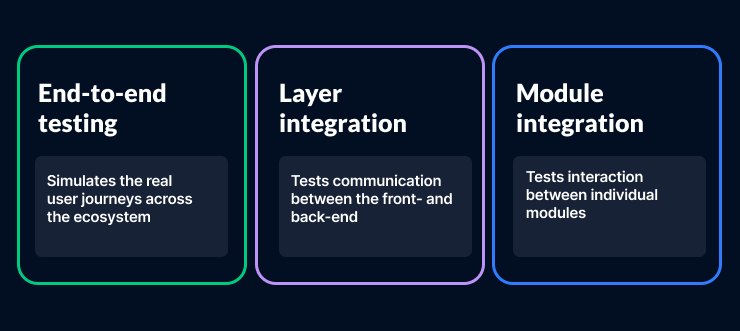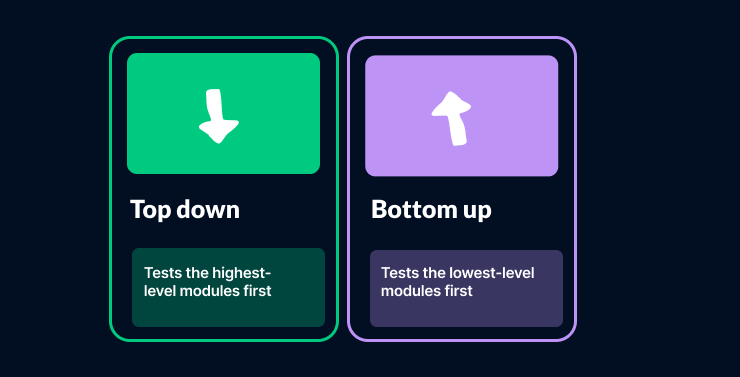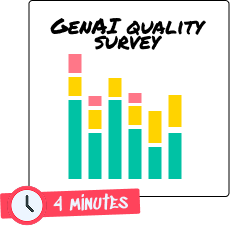Integration Testing: definitions, purpose, resourcing options
Suppose a new ride-sharing app goes live. It passed all unit and user interface (UI) tests, but within hours of release, users started reporting that promo codes don’t apply when they pay with certain credit cards. The bug? A subtle mismatch between the payment gateway and the promo engine, two systems that had never been tested together with real user credentials.
This is where integration testing comes in.
Integration testing is the phase where individual components or subsystems of a software application are tested collectively to ensure they interact correctly with one another. It’s not just about "if" the modules connect and integrate, but how they work together in production from functional and user experience points of view.
In this article, we will discuss what integration testing is, its different approaches, and why crowdtesting should be considered for large-scale integration testing.
What is Integration Testing?
Integration testing refers to any software test which reviews how two connected systems work together.
In practice, this is often intrinsic to overall software functionality. Most software is knitted together across individual parts and suppliers, with multiple small parts ("microservices") integrated at different levels to build a complete service. One service manages user login, another handles payments, and a third sends email notifications. They all need to communicate flawlessly with each other through API calls and WebSocket connections.
In a microservices system like this, testing the integration point of the services becomes critical. This testing, formally known as integration testing, ensures that independently built and tested components actually work together as expected.

Integration testing occurs at the interface level, where the entire application and user flows interconnect. These interfaces form the base of the software infrastructure. They include APIs that communicate with services, frontends that interact with backends, and microservices that exchange data with the database.
Integration testing covers all these interface points and ensures that complete user journeys work as expected. It does not overwrite the importance of unit and system testing; rather, it enhances it. Let’s look at this combination of different testing types in detail.
Integration vs Systems vs Unit testing
Testing at the unit, integration, and system levels are not separate efforts; they’re critical steps in the overall test plan. Each step has a unique purpose, and can leave a gap if skipped. While unit tests validate individual functions in code, integration testing ensures these functions work together, and system testing verifies the full end-to-end experience.
Let’s explore how these types differ from each other:
|
Unit Testing |
Integration Testing |
System Testing |
|
Focuses on individual functions, classes, or components in code. |
Focuses on the interaction between integrated modules or services. |
Focuses on system as a whole to validate end-to-end functionality. |
|
Done as part of the development phase. |
Done after unit testing, during the feature testing phase. |
Conducted during release regression testing before UAT or release. |
|
Responsibility of the dev team. |
Responsibility of QA team, often in collaboration with developers. |
Responsibility of QA team. |
|
Fast, isolated, and part of development pipelines. |
Medium complexity, requires automation for quick execution, and involves multiple parts of the system. |
High complexity, real environments, full end-to-end scenarios; may include manual and automated tests. |
|
Example: Testing whether the shipping fee calculator on the checkout page calculates the correct shipping fee based on location. |
Example: Ensuring that customers receive email notifications once an order is placed. |
Example: Ensuring that the end-to-end checkout process is functioning properly. |
Different types of integration testing
Integration testing is divided into two major types based on the approach and the phase of the software development life cycle where the testing is executed:
b780.png)
Incremental vs Big Bang integration testing
- Big bang integration testing involves testing the entire system by integrating all modules simultaneously. It's best applied to smaller, less intricate systems. In big bang integration testing, the team views the system as a composite, which is why it lacks visibility into which module is producing a failure. This can complicate debugging because multiple variables are introduced simultaneously.
- Incremental integration testing is a phased approach, where modules are integrated and tested one at a time or in small groups. This helps teams identify defects in isolation and allows for ongoing validation as the system builds up. It is especially helpful in big systems, where an orderly and gradual integration process is required to tackle complexity.
Incremental integration testing is further split into two approaches:

Top-down vs Bottom-up Approach
- In Top-Down, testing starts with the upper-level modules or components, gradually integrating lower-level modules step by step. Stubs are used to mimic not yet integrated modules, allowing for the end-to-end flow to be integrated.
- The Bottom-Up strategy begins by testing the lowest-level modules and progressively integrating higher-level ones. Drivers are developed to emulate the higher-level modules until the overall system is completely integrated. This strategy ensures that core components are stable before being integrated into the higher levels.
Why is Integration Testing so important?
Take an example of a travel app to book a flight. You choose dates, add travelers, charge it to your card, and get a confirmation email. Each operation is self-sufficient. But suppose that the payment operation gets completed, but no ticket is created? That is not a bug in a single component; that's a breakdown in how components communicate with each other. That is exactly why integration testing is necessary.
Integration testing ensures that different pieces of software not only work individually but also collaborate seamlessly, creating a coherent and reliable user experience. Here are key benefits of integration testing:
- Identify bugs at the interface level: Testing the integration point of two modules (at the interface level) ensures that they communicate correctly, flow data as expected, and generate the required output.
- Allows fast system testing: Once all the modules are tested separately at feature testing level, and combined at integration testing level, very few bugs slip into the system testing phase. This makes the system and regression testing faster.
- Enhances CI process: Automated integration testing is often part of Continuous Integration. This means that with every code merge, the specified integration tests are executed. This improves the overall CI process.
- Reduced post-release issues: Incremental integration testing helps avoid regression issues by finding bugs in integration.
- Improves user experience (UX): Sometimes, individual components have good UX. However, when combined with other components, the user experience can be unintuitive and frustrating. Integration testing ensures that the UX is smooth and clear for the user.
Integration vs Systems vs Unit testing
Testing integrations in a complex system requires thinking outside the box. It involves creating test cases based on actual user experience, analyzing the system as a whole, and identifying performance bottlenecks within interfaces, as well as detecting data flow issues between systems. These tasks can prove tricky for teams that are inexperienced with the integration testing process.
While performing integration testing, the following questions might arise and pose challenges for the QA teams:
- Which backend and frontend components need to be tested together? In large-scale applications, identifying linked components, third-party integrations, and testing cases at the interface level can become challenging due to the system's scale. To resolve this, QA teams utilize mind maps, flowcharts, and dashboards of the application infrastructure.
- How and where is the data flowing? Identifying the path of data flow between the backend, frontend, and databases is not straightforward. It involves exploring API responses, validating schemas, and even going to the query level in the database. This challenge is tackled using tools like Postman and Elastic APM for proper visibility of data and proper monitoring of production environments.
- What tools and expertise are needed? Consider the example of a scale integration test between the authentication/login service, notification service, and database. Once in production, thousands of sign-ups can overwhelm these systems, causing failures in login, email delivery, or data storage. This scale integration test is of high priority from a business standpoint, as it can make or break new user trust; however, it is challenging to execute. Tools like JMeter and Gatling can be used to simulate this test case.
- Are we testing the right user journeys? User journeys contain multiple layers and components of frontend, backend, microservices, and databases. This makes it challenging to trace and validate the core business paths and end-to-end user journeys. To resolve this, practices that follow defined business logic, user flow, and detailed requirement definition are employed.
To address these challenges effectively, teams require a comprehensive and structured approach to integration testing. Let’s explore this step-by-step process in the following section.
Your step-by-step Integration Testing process
An organized integration testing process helps teams overcome the challenges, foresee the bottlenecks, identify issues earlier, and ensure that systems work smoothly together.
Below, we have discussed the major steps involved in integration testing:
A) Determining the integration testing scope
Start by highlighting the high-priority modules and their integration points. Here, high-risk and critical user journey modules should be given priority.
When making this assessment, ask yourself the following questions:
- Are the modules business critical?
- How frequently do they change?
- Do they rely on external services?
B) Choosing between different types of integration testing
As discussed earlier, there are two primary approaches to integration testing: the big bang approach and the incremental approach. The big bang approach involves developing all the modules and testing their integration simultaneously. The incremental approach includes the gradual testing of modules.
Systems with fewer modules can be tested using a big bang approach, where QAs can wait for the whole application to be deployed and then test it. In such scenarios, it is easier to identify exactly where the issues are, as there are fewer parts of the application.
Large-scale systems demand incremental testing. QAs use bottom-up or top-down approaches here to ensure that modules are tested at each interface. In this scenario, testing commences early in the development cycle, enabling teams to identify integration issues earlier and isolate defects more effectively
C) Six key steps of the integration process
Integration Testing Process
Once you have chosen the modules and type of integration testing, the following are the six key steps to have an organised and complete plan:
- Identify integration points: Identify the critical points in your application where different modules interact and their integration needs to be tested.
- Choose your strategy: Select between big bang or incremental integration testing, based on your system's complexity and delivery requirements.
- Set up environment: Create a test environment that mocks production as closely as possible. Mock or stub missing components that have not been developed yet.
- Design test cases: Write test cases that validate data flow, interface contacts, and error handling across multiple modules.
- Execute and log results: Execute tests and capture logs, response times, and failure points for analysis and review.
- Analyze and iterate: Trace down and analyze the failures after they have been fixed.
D) The typical roles in an integration testing suite
Quality is a shared responsibility across the team; testers alone cannot safeguard it. When it comes to integration testing, several roles play a crucial part in ensuring success:
- QA engineer: The QA engineers are responsible for designing, building, and executing the integration test suite.
- Developers: They are responsible for providing technical support and fixing interface bugs.
- Integration specialists: Own the integration testing planning, scope definition, strategy, architecture, and tools selection.
- DevOps team: Provide stable environments representing real-world conditions.
ED) The typical roles in an integration testing suite
Integration testing is a cross-functional effort and requires cooperation and support across multiple teams. For example, the frontend team pushes a change related to date processing that breaks the relevant backend logic. This issue can only be resolved through cross-functional collaboration between the frontend and backend teams.
Now that we have discussed the main steps for integration testing, let's move on to an overview of the key techniques.
Techniques for Integration Testing
Integration testing is a dynamic process that involves multiple techniques and approaches. Some of the prominent ones are:
- Using stubs and drivers: Using stubs is a standard integration testing technique for testing applications where modules are under development. Stubs are elements that return hard-coded responses. For example, if a UI element is interacting with a payment module that is not developed, a fake success response, such as {status: “paid”}, can be used for testing.
Similarly, drivers are temporary modules used in bottom-up testing that call lower components. They are used when the child module is under development. For example, you can build a driver to pass login credentials to a standalone login function.
- Service virtualization: Service virtualization is a technique used to simulate third-party services that are expensive to utilize continuously for testing purposes. For example, if your flow depends on a shipping API that charges per request, you can create a virtual service that mimics the real API's behaviour.
- API testing techniques: API testing focuses on validating the communication between services and modules using API. Some of the key tests include:
- Response data validation
- Checks for HTTP status codes
- Error message consistency and edge case handling
- Schema testing, i.e., ensuring that API consumers and providers agree on the structure of the API.
For example, you can test a /createUser endpoint by sending a request and verifying that the status code is 201 (Created) and the status message is "Success".
Is Crowdtesting Right for Integration Testing?
Integration testing is traditionally viewed as a technical, automation-heavy activity that requires a large QA team to collaborate and create a test plan. This team is responsible not only for developing the test plan but also for designing test cases, manually executing them, automating them, testing on scale, and integrating them into the integration testing pipeline.
Additionally, the integration team ensures that test cases are executed across devices, languages, locations, OS, and platforms.
This sounds overwhelming and it is. Hiring an inhouse team of this expertise and scale, and ensuring that they are working effectively is a time and resource taking task.
Here, crowd testing comes into play.
- When to use crowd testing:
Crowdtesting is particularly effective when integrations involve variables related to physical devices, geographic constraints, or language-dependent user flows.
For instance, verifying a payment flow that behaves differently for various card types, or validating biometric logins across different devices, is where crowdtesters excel.
- When to avoid it:
Crowdtesting is not the replacement of functional automation and repetitive integration cycles. It’s not designed to compete with CI pipelines but to complement them at the final stage catching edge cases automation can miss.
Crowdtesting as a complementary approach:
A multiple system integration test with fast releases and large-scale needs requires both an in-house team and a crowd testing team. Crowdtesting enables teams to test these flows with precise credential profiles, physical constraints, and human judgment, providing the final approval before release. Whereas the in-house team can write automation test cases and handle positive workflows.
Integration Testing Best Practices
To maximize the benefits of integration testing, it is essential to be aware of best practices. Some of them are as follows:
- Combine unit, integration, and system tests: It is essential to understand that all these layers of testing have their strengths, and they are most effective when they complement one another.
For example, a shopping cart function would be unit tested to calculate the total, then its integration would be tested with the checkout module, followed by testing it in an end-to-end order placement flow.
- Choose the right integration strategy: Before diving into integration testing, it is essential to assess which type of testing is best suited for your needs. Type-down, bottom-up, and hybrid forms of integration testing are all suitable for specific test cases.
For example, the top-down approach is suitable when the frontend is ready; the bottom-up approach works for targeting core services, whereas a hybrid approach is suitable when some modules are developed while others are pending.
- Ensure coverage without redundancy: It is essential to prevent integration tests from duplicating tests from other layers. They should focus more on the interaction between the modules, rather than the core functionalities of the modules, as these are already accounted for in unit tests. Using a traceability matrix and automating repetitive test cases also helps to avoid redundancy.
For example, integration tests for a login module should not test the authentication itself; rather, they should test its interaction with user and session modules.
Integration testing with Global App Testing
Integration testing ensures that in a microservices-based system, all microservices are seamlessly working together. While automation plays a key role, manual validation across real-world conditions is often essential. That’s where expert help matters.
Global App Testing provides pre-configured integration test scenarios from our extensive test case library, tailored to meet your system's specific needs. Our global tester network provides the context, coverage, and credential diversity necessary to identify hard-to-find issues. Talk to us to supercharge your integration testing with speed, accuracy, and real-world confidence.
Need some help with integration testing?
We can help you to test across multiple systems to bring your product to a better standard leveraging our tester crowd

